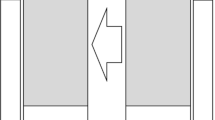Abstract
The disciplinary, transdisciplinary, and noosphere paradigms of the development of science and a natural-scientific picture of the World are considered. The role of science, its information-technological component, and the role of artificial intelligence in the evolution of the modern society and noospheregenesis as a whole are described. The basic concepts of the modern paradigm of science are substantiated and formulated. Their essence lies in the efficient combination of problems of knowledge of Nature and society evolution within the framework of the transdisciplinary paradigm.
Similar content being viewed by others
References
A. V. Palagin and A. F. Kurgaev, “Interdisciplinary scientific investigations: Optimization of system-information support,” Visn. NAN Ukrainy, No. 3, 14–25 (2009).
A. F. Kurgaev and A. V. Palagin, “The problem of scientific research effectiveness,” International Journal Information Theories & Applications, Vol. 17, No. 1, 88–99 (2010).
A. F. Kurgaev and A. V. Palagin, “On the subject of information support for scientific research,” Visn. NAN Ukrainy, No. 8, 33–48 (2015).
A. V. Palagin and A. F. Kurgaev, “A transdisciplinary paradigm for the development of science,” in: Proc. Vth All-Ukrainian Scientific-Practical Conf. “Glushkov readings” on Interdisciplinary Investigations of Actual Problems of Application of Information Technology in the Modern World: Kyiv (2016), A. A. Melnichenko, B. V. Novikov, V. B. Pikhorovich, et al. (compilers), OOO NPP “Interservis,” Kyiv (2016), pp. 141–145.
J. Bollen, H. Van de Sompel, A. Hagberg, L. Bettencourt, R. Chute, et al.,
V. I. Vernadsky, The Biosphere and the Noosphere [in Russian], Nauka, Moscow (1989).
A. V. Garkovenko and A. A. Pakhomov, “Homology modeling of the spatial structure of GFP-like proteins,” Modern Problems of Science and Education, No. 6, 76–83 (2012).
N. Shadbolt, T. Berners-Lee, and W. Hall, “The semantic Web revisited,” IEEE Intelligent Systems, Vol. 21, No. 3, 96–101 (2006).
A. I. Shevchenko, Actual problems of the Theory of Artificial Intelligence [in Russian], IPAI “Science and Education,” Kyiv (2003).
A. Palagin, “Arrangement and functions of a “language” world picture in semantic interpretation of natural languages and messages,” International Journal Information Theories & Application, Vol. 7, No. 4, 155–164 (2000).
A. V. Palagin, “Transdisciplinarity problems and the role of informatics,” Cybernetics and Systems Analysis, Vol. 49, No. 5, 643–651 (2013).
Author information
Authors and Affiliations
Corresponding author
Additional information
Translated from Kibernetika i Sistemnyi Analiz, No. 4, July–August, 2017, pp. 12–21.
Rights and permissions
About this article
Cite this article
Palagin, A.V., Kurgaev, A.F. & Shevchenko, A.I. The Noosphere Paradigm of the Development of Science and Artificial Intelligence. Cybern Syst Anal 53, 503–511 (2017). https://doi.org/10.1007/s10559-017-9952-4
Received:
Published:
Issue Date:
DOI: https://doi.org/10.1007/s10559-017-9952-4




